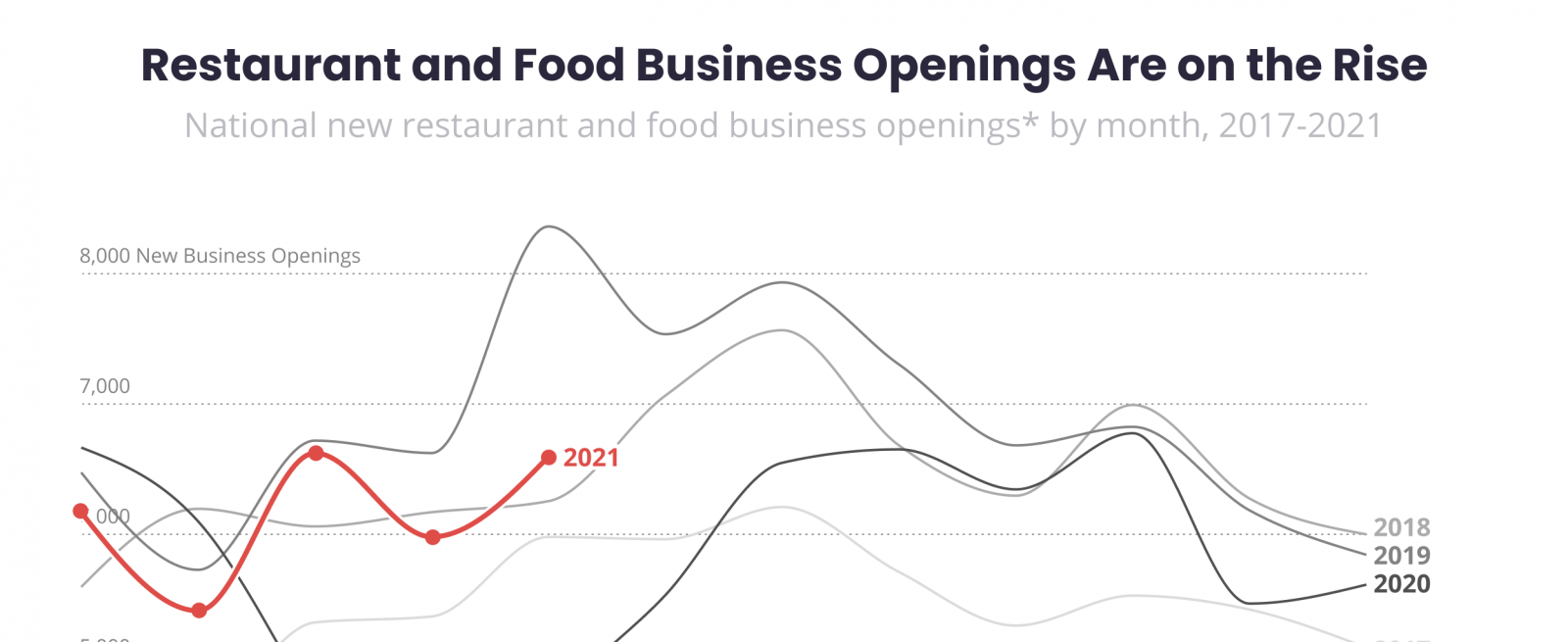MRM Research Roundup: Mid-June 2021 Edition
13 Min Read By MRM Staff
In this edition of MRM Research Roundup, we have news of a possible-robust recovery for restaurants, home delivery and top food delivery apps.Surge in Diner DemandYelp Data shows restaurants are reopening amidst a surge in diner demand. Yelp found more than 3.7 million diners seated via Yelp* in May 2021 – the highest ever, surpassing pre-pandemic highs. In fact, the number of diners seated via Yelp was up 48 percent in May 2021 compared to May 2019. They saw a similar increase in diners seated in April 2021.
As diners head back into restaurants, new restaurant and food businesses are opening at near pre-pandemic levels. Nearly 6,600 new restaurant and food businesses opened in May 2021, a 42 percent increase from May 2020 and down by only 21 percent from May 2019.
Yelp data also shows a significant spike in food and restaurant business reopenings, with nearly 16,500 reopenings in April 2021 — the highest since April of 2020 – and leveling out with more than 5,000 reopening…
Sorry, You've Reached Your Article Limit.
Register for free with our site to get unlimited articles.
Already registered? Sign in!

